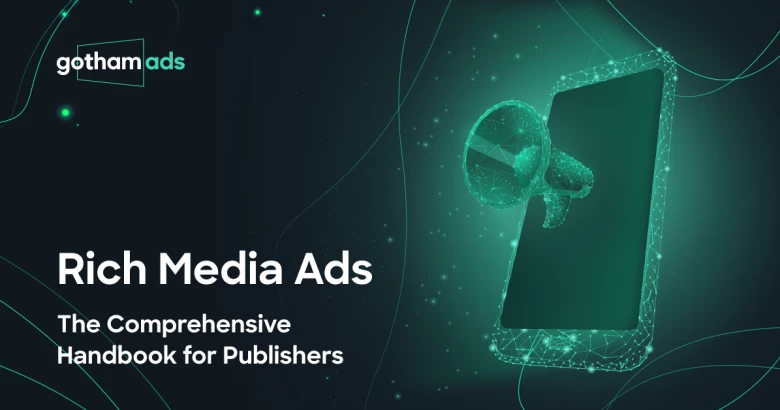Learn More About the Benefits of In-Banner Video Ads
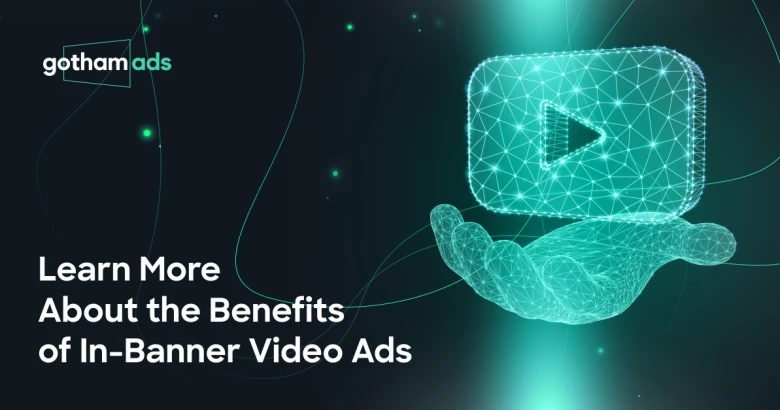
Banner advertising has evolved into a highly effective and swift avenue for both publishers to monetize their websites and advertisers to captivate their audiences with dynamic content. Statista's research supports this trend, indicating that banner advertising expenditure is set to hit US$174.4 billion in 2024. This upward trajectory is expected to continue, with a forecasted annual growth rate (CAGR) of 5.69% from 2024 to 2028, culminating in a market volume of US$217.6 billion by the end of the period.
Additionally, the average expenditure on banner ads per internet user is anticipated to reach US$31.5 in 2024, reflecting the growing investment in this advertising format. This data underscores the significant role banner advertising plays in the digital marketing landscape, offering both reach and engagement opportunities for brands while providing a lucrative revenue stream for website owners.
In-banner video advertising is a type of banner advertising characterized by short videos (with no sound) or GIFs embedded into a typical display ad (or banner ad) slot. These videos are usually HTML5 creatives designed from the thumbnail image and a text description of limited characters.
In-banner video ads deliver a dynamic ad viewing experience, and they can incorporate animated or interactive elements to increase engagement. Hence, they are much more interactive than traditional display ads.
Types of In-Banner Video Ads
Three common types of in-banner video advertising exist, each designed to capture the viewer's attention and enhance engagement within the confines of a web page. Each of these in-banner video advertising types is designed with specific user engagement strategies in mind.
1. Click to play. This form of in-banner video advertising starts off as a static image. The video then begins to play once a user clicks on the ad. One interesting aspect of "Click to play" advertising is flexibility and effectiveness in various digital environments. Unlike in-stream ads that are dependent on other video content and may seem intrusive, "Click to Play" ads are initiated by user interaction, offering a more user-friendly approach.
Moreover, "Click to play" ads create a sense of urgency in the call-to-action. This can be achieved by offering time-sensitive promotions or discounts that encourage immediate action, such as "Click now and save 25%" or "Take an additional 30% off when you order through this link." Such strategies can significantly increase the likelihood of users engaging with the advertisement.
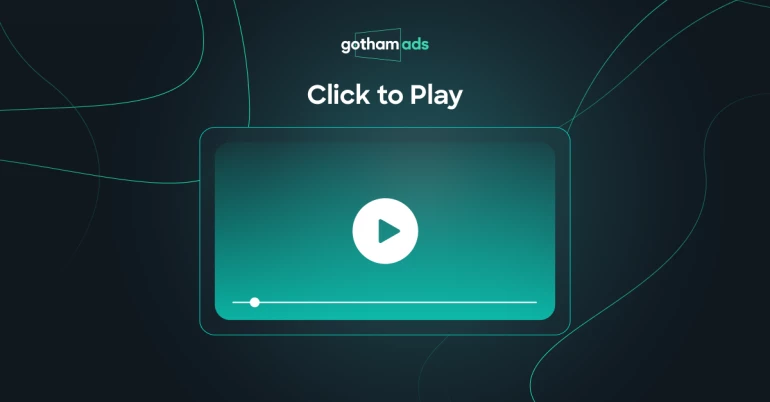
2. Autoplay with no sound — In this scenario, the video ad will automatically start as soon as it’s in the user’s sight but will play muted.
A vast majority of video content viewers prefer autoplay with no sound, indicating a general tendency to engage with content that does not disrupt their browsing experience. Ad makers are having to adjust to the lack of sound, innovating ad spots that turn the tables around through text and celebrity appearances, challenging users to flip on the sound.
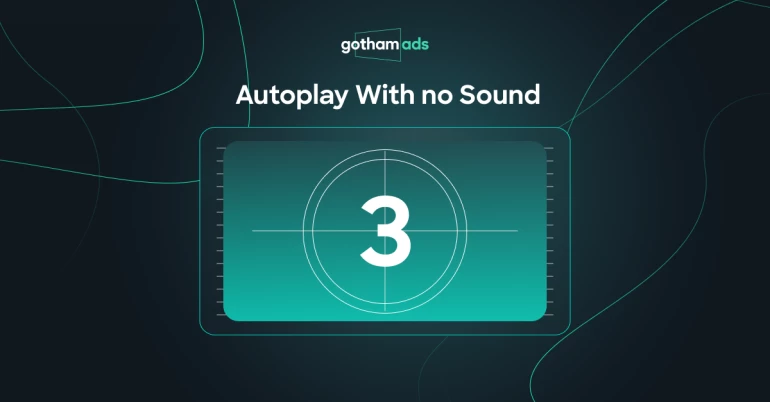
3. Hover to play. This type of advertisement activates only when a user hovers their mouse cursor over it.
Advertising that utilizes "hover to play" mechanisms, encourages users to engage with the content actively. This interactivity can lead to increased brand awareness and recall. A study highlighted by Instapage shows that interactive video ads can result in a 47% lift in time spent with the ad, making them 32% more memorable than non-interactive ads and significantly impacting purchase intent
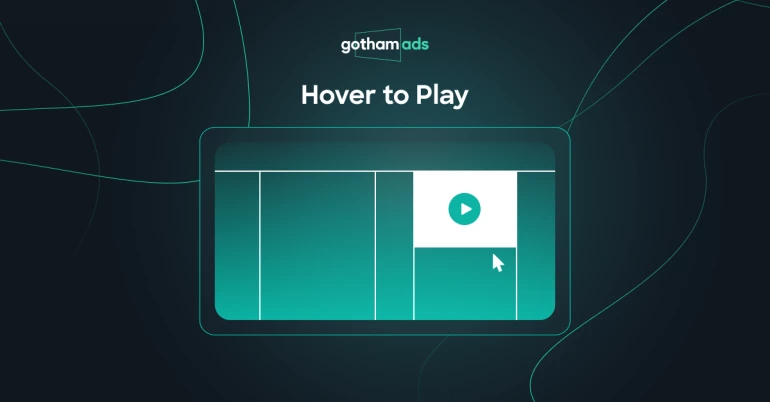
Common In-Banner Video Ad Sizes
Below are the most common in-banner video ad sizes, but different sites, apps, and regions support other sizes.
- Medium Rectangle: 300x250, 250 × 250, 320 × 320, 336 × 280;
- Leaderboard: 728x90, 468 × 60, 800 × 250, 970 × 90, 970 × 250;
- Wide Skyscraper: 160x600, 120 × 600, 300 × 600, 300 × 1050;
- Half Page: 300x600.
Benefits of Using In-Banner Video Ads
In-banner video advertising interacts with the audience online, blending seamlessly into the digital landscape without disrupting the user experience. This approach offers a slew of additional advantages that enhance the effectiveness of ad campaigns. Let's explore the myriad benefits that make in-banner video advertising a compelling choice for those who want to capture and engage their target audience more effectively.
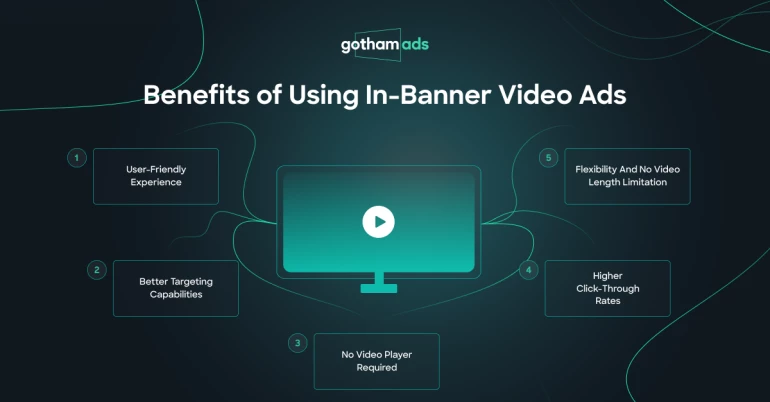
1. User-friendly experience. Unlike traditional pop-up ads or pre-roll video ads that can interrupt and annoy users, in-banner video ads integrate smoothly within web content. These video ads don’t appear like an outright promotion. Instead, they appear on the top search results or the sidebar, and it’s entirely up to the user if they want to click on the ad. This minimizes disruption to the user's online activities, promoting a more positive user experience.
2. Better targeting capabilities. In-banner video ads can be targeted based on user behavior, interests, and demographics, much like other digital ad formats. This precision targeting helps ensure that the video content reaches the most relevant audience, increasing the likelihood of engagement.
3. No video player required. In-banner video ads can be targeted based on user behavior, interests, and demographics, much like other digital ad formats. This simplifies the ad setup process and reduces dependency on third-party video player technologies.
4. Higher click-through rates. Thanks to their engaging content, in-banner video ads often enjoy higher CTR compared to traditional display ads. Though these ads are more expensive and time-consuming to create, their ability to effectively narrate a story drives more ad clicks. These creative stories can motivate more users to click through to the advertiser's landing page or website.
5. Flexibility and no video length limitation. Compared to in-stream video ads with strict duration limits, these ads can be as long as the marketers want them to be. This benefit gives them a lot of flexibility. and allows them to tailor their message without being constrained by time limits. However, they must still be mindful of file size limitations to ensure optimal loading times.
How to Get Started with In-Banner Video Ads
While in-banner video advertising holds great potential, it's crucial to implement effective strategies to maximize its impact. Here are a few best practices that can help you with it.
1. Choose the right type of video ad and place it correctly. Choosing the right type of video ad and placing it correctly is crucial for the success of your advertising campaign. Different video ad placements offer distinct advantages and can significantly impact the user's engagement with your content.
2. Optimize for engagement. Video banners should be designed to attract viewer attention and encourage interaction. This can be achieved by starting with a compelling message, ensuring your brand logo is visible, and including a clear call to action. The video content should be concise and direct, aiming to engage viewers quickly.
3. Be mindful of ad length and quality. Yes, there’s no duration limit for in-banner video ads, but a shorter video would have the most negligible impact on your page and a better user experience. For autoplay in-banner video ads, it's recommended to keep the duration to a maximum of 15 seconds to maintain viewer interest. Also, ensure the video quality is high but the file size does not exceed 1.1mb to balance engagement with website performance.
4. Ensure user-friendly implementation. In-banner video ads are praised for their excellent user experience as they are less intrusive compared to other ad formats. They don't require a video player, giving advertisers the freedom to use GIFs or short videos without length limitations. However, ensure that your ads don't negatively impact website loading speed or SEO.
Following these best practices, you can harness the power of in-banner video ads to create engaging and effective advertising campaigns that resonate with your target audience and drive desired outcomes.
Final words
Video is the most engaging type of content. Viewers remember 95% of the message when they watch it in a video compared to 10% when reading it in text. In-video advertising, a prominent method of video marketing, is not only memorable but also significantly impacts conversion and sales rates.
A report by the IAB highlights that nearly two-thirds of digital advertising budgets are dedicated to video advertising, spanning both mobile and desktop platforms.
Interested in exploring in-banner video advertising for your brand? Reach out to us, and let's kickstart your journey towards leveraging this powerful advertising tool!
FAQ
1. What are in-banner video ads?
It is a type of banner advertising characterized by short videos or GIFs embedded into a typical display ad slot.
2. What are the types of in-banner video advertising?
Click to play
Autoplay with no sound
Hover to play
3. What are the benefits of using in-banner video ads?
User-friendly experience.
Better targeting capabilities.
No video player required.
Higher click-through rates.
Flexibility and no video length limitation.


